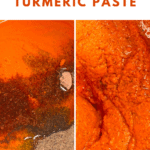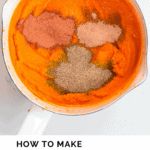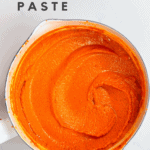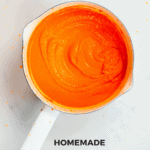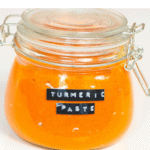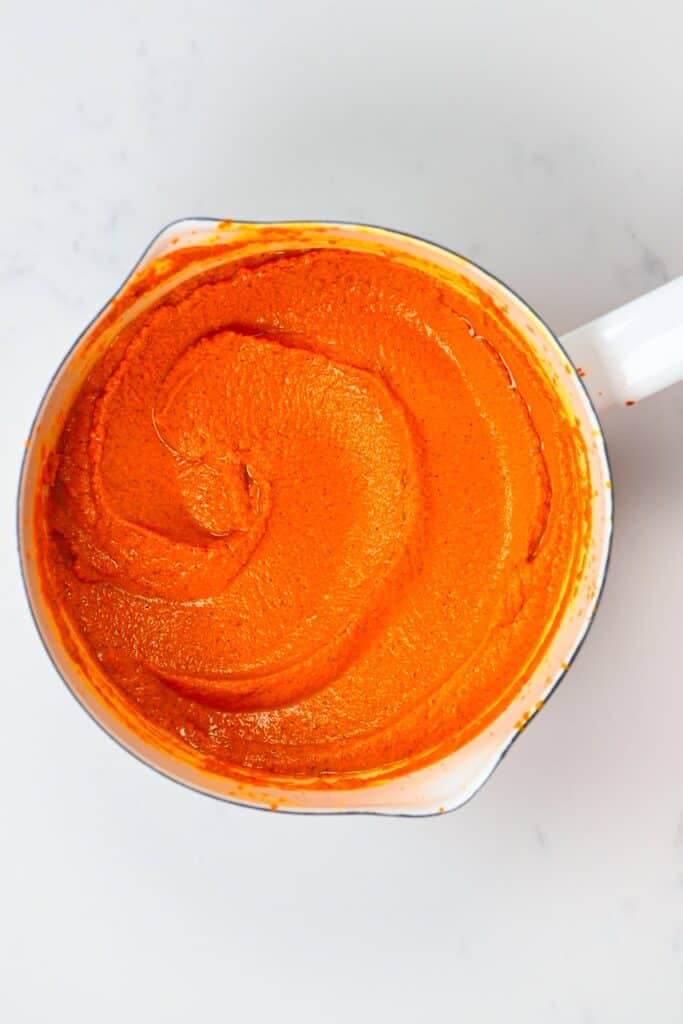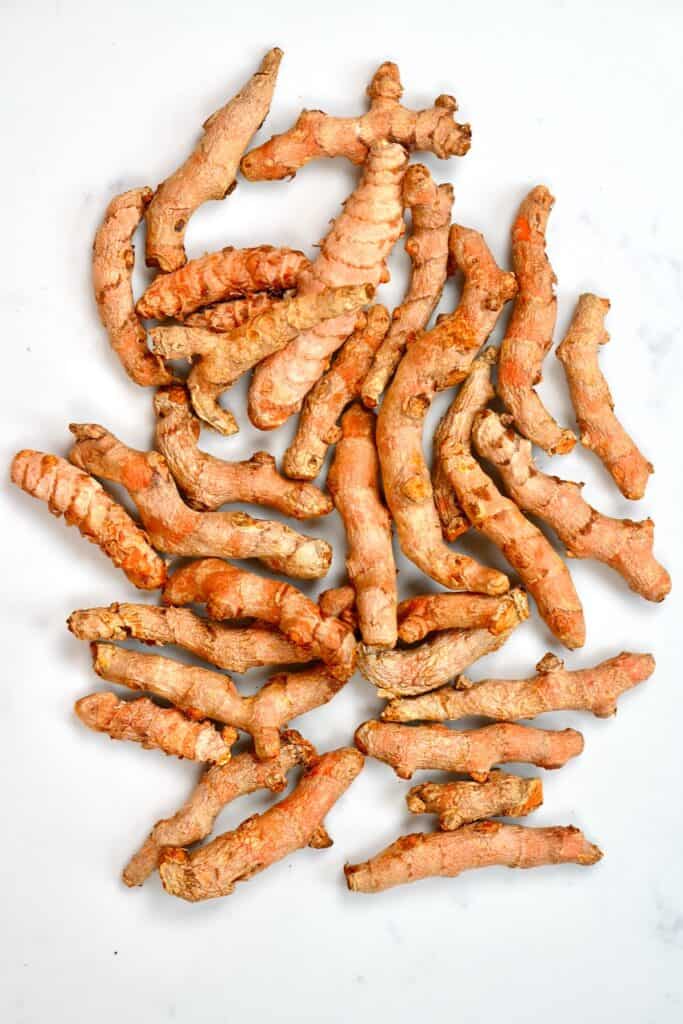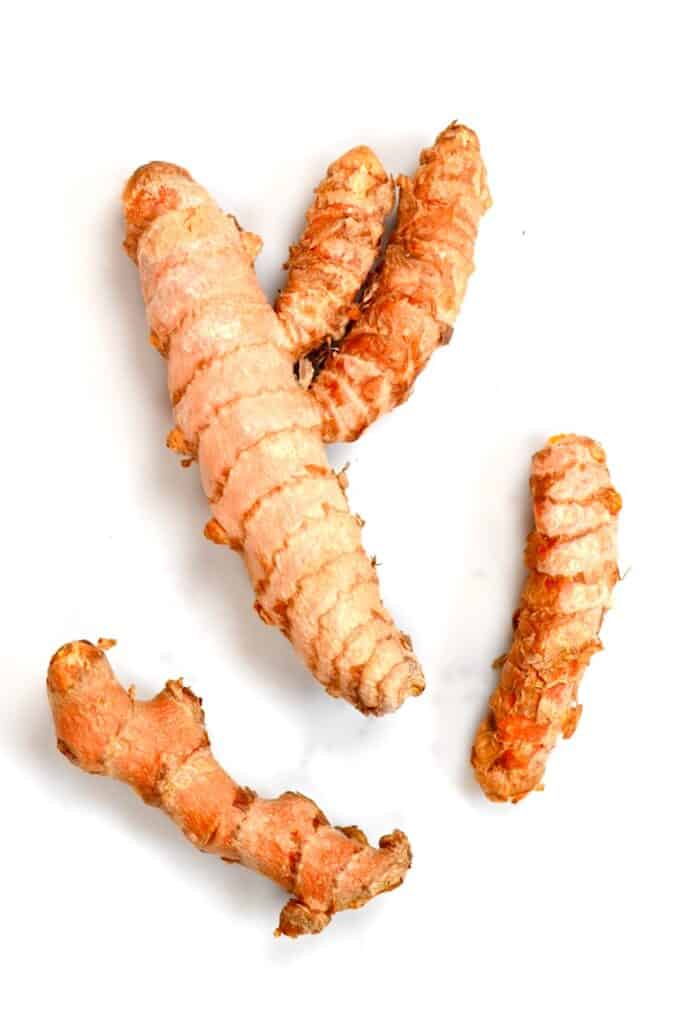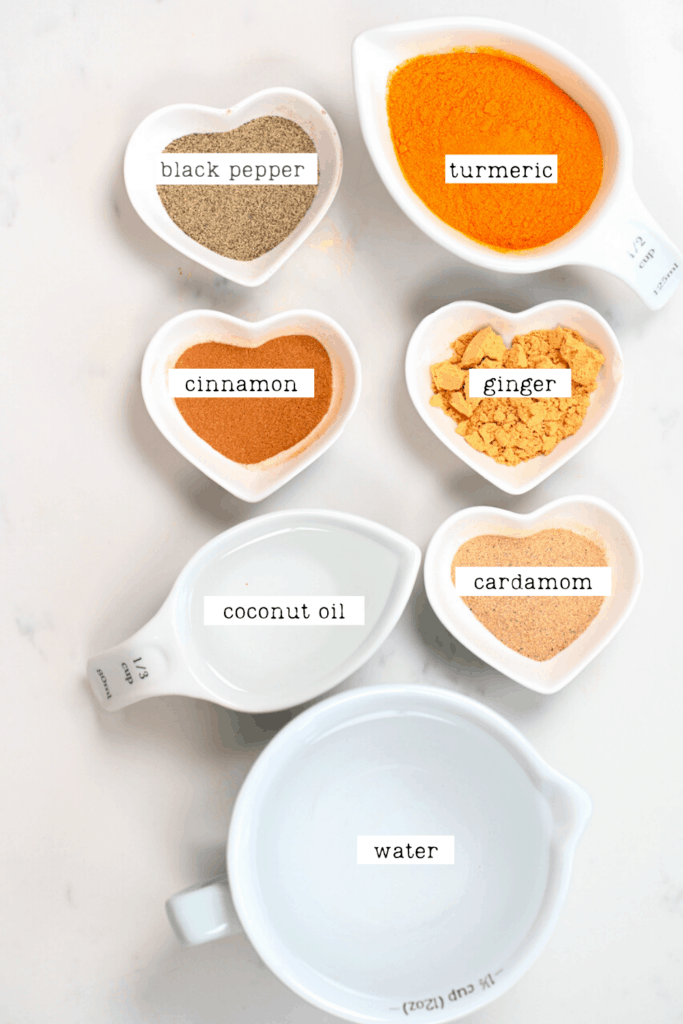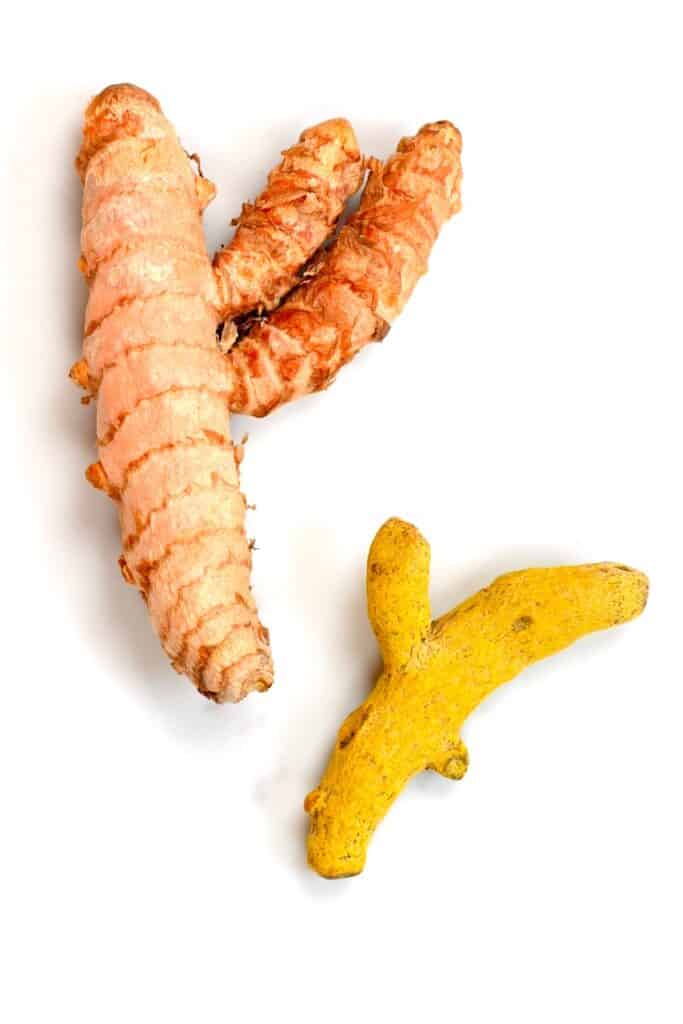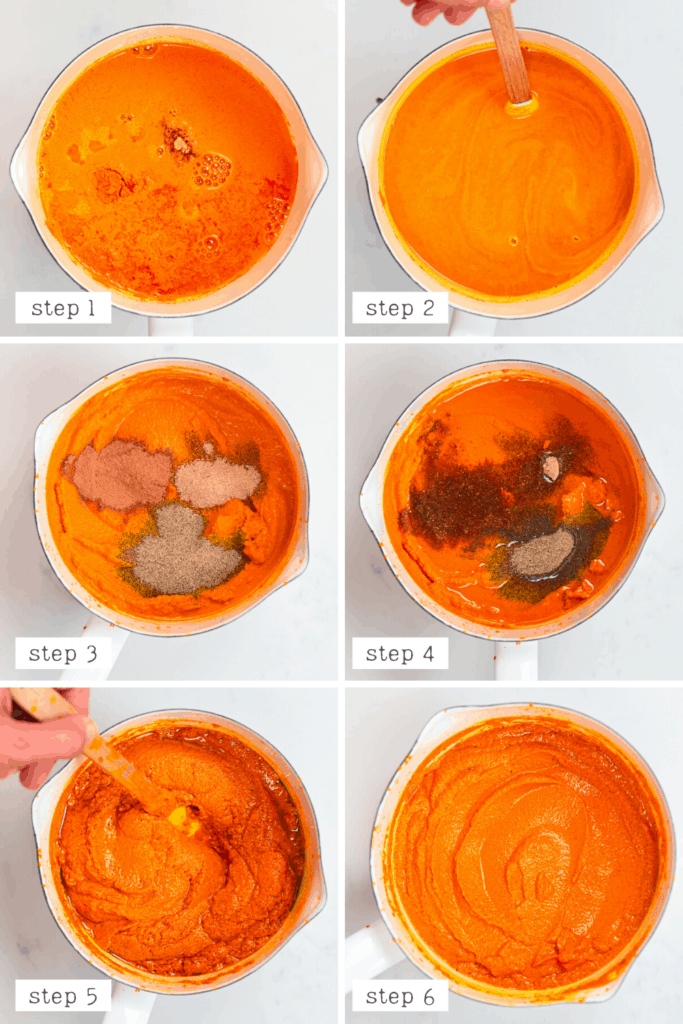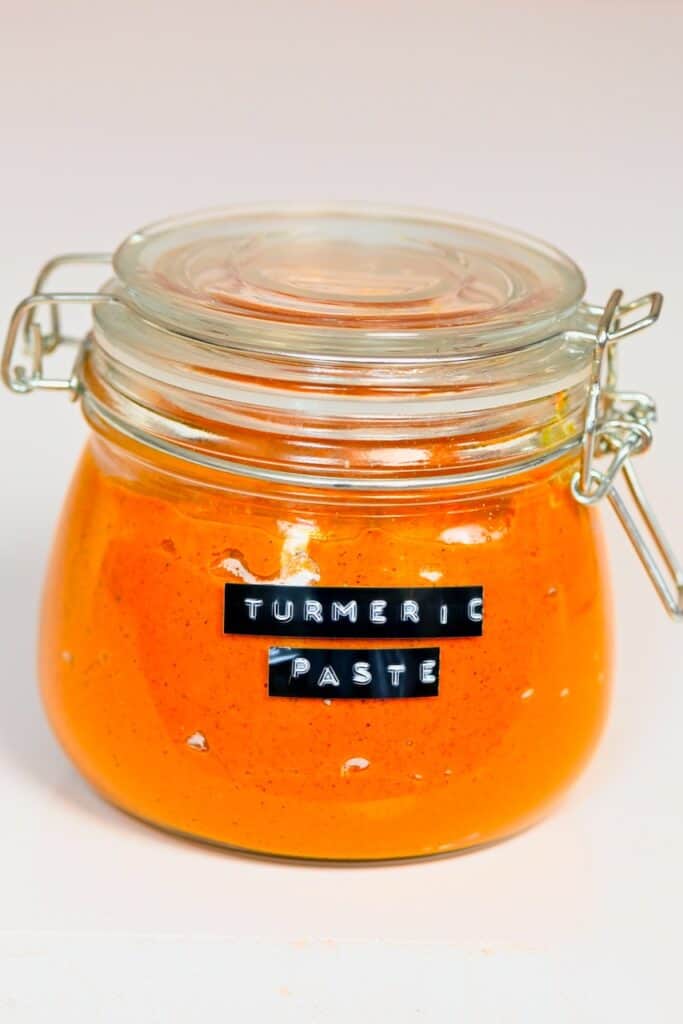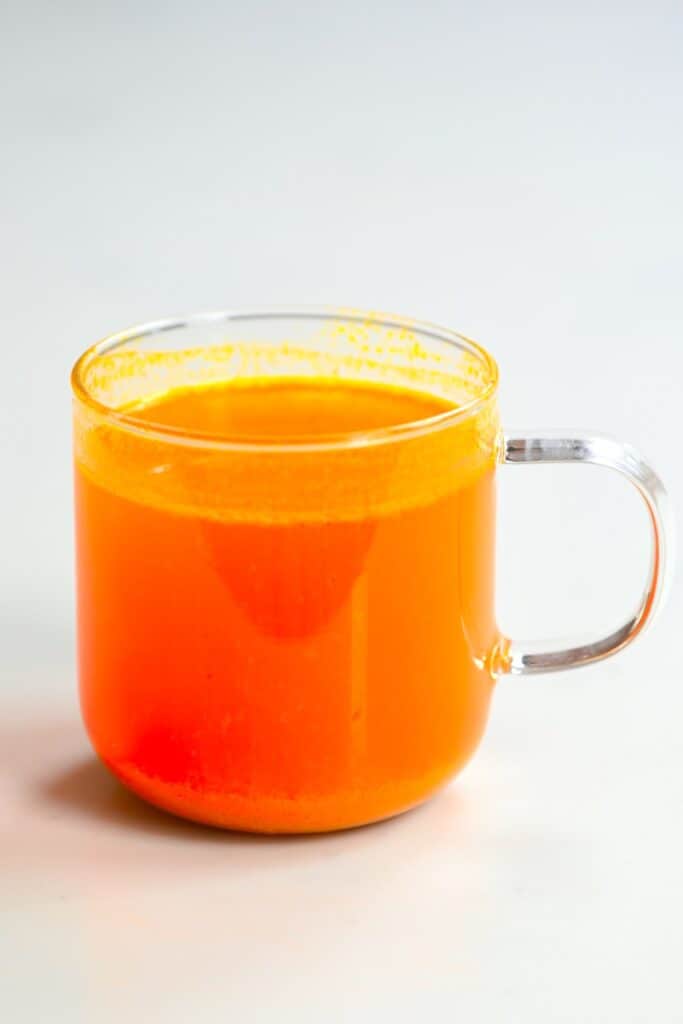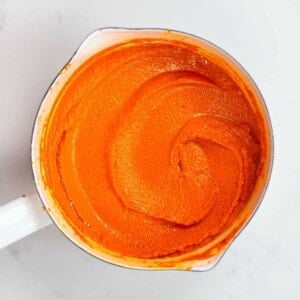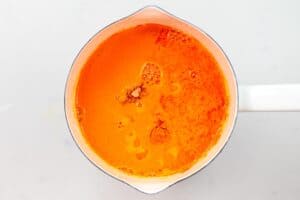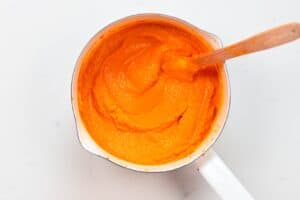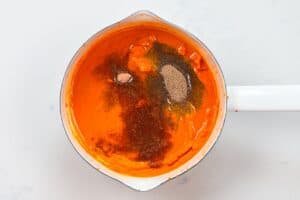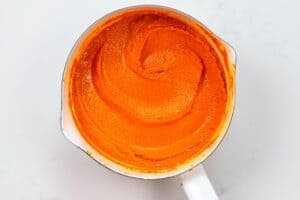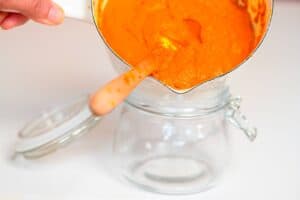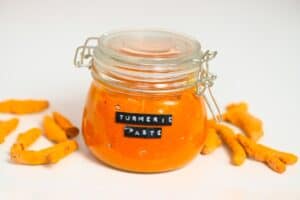After a lot of studying and reading surrounding turmeric, I’ve come to regard this ingredient as an absolute must-have in my kitchen and diet. This homemade turmeric paste (also called Golden paste or Golden milk paste) makes it incredibly easy to add this ingredient into your diet every day in an almost effortless way! This post will take you through what turmeric paste is, the health benefits, how to make, store, and use it. Plus, I include two methods of making it – one as a fresh turmeric paste and the other using turmeric powder.
The Health Benefits of Turmeric
First and foremost, I think I should mention that turmeric has been used for centuries in Indian and Chinese cuisine and medicines. However, it’s only really within the last few years that it has hit the western health scene HARD. And, rather than it being just a ‘blogger’ farce or anything, turmeric actually has tons of studies to back up its many claims. For instance: Turmeric contains antibacterial, antioxidant, anti-cancerous, and anti-inflammatory properties. Studies have also shown it can help modulate the immune system, combat DNA damage, protect bones and joints, improve digestion, and encourage healthy gut flora. As well as also being beneficial for the liver, shielding it from a number of diseases. Many people use it as a natural remedy to prevent and improve the symptoms of several diseases (and skin conditions). These include inflammatory diseases, type 2 diabetes, metabolic issues, and even cancer. In fact, studies show that the curcumin found within turmeric works well at killing cancer cells and preventing cancer cell growth. Particularly regarding breast, bowel, stomach, and skin cancer. It actually ‘asphyxiated’ tumors, preventing them from being able to grow – which is pretty amazing! Plus, what is possibly the most impressive of all claims: turmeric may be able to reduce pain (and fever) as much as drugs like Ibuprofen, Prozac, and Tylenol! And all with no side effects. And there are probably even more.
What Is Turmeric Paste? (Golden Paste)
While you could technically just start adding turmeric powder to all your dishes, this won’t actually provide you the best results. In fact, there are a couple of very important factors to consider when using turmeric. The active element (curcumin), which is attributed to the majority of health benefits provided by turmeric, needs a helping hand to be fully absorbed by our bodies. Studies show that curcumin needs to be taken alongside black pepper and fat (such as coconut oil, butter, etc.), to get all the benefits. One study showed that just a pinch of black pepper served with turmeric increases the bio-availability by 2000%! So definitely not something to ignore. Meanwhile, curcumin also has low solubility in water, so combining it with a healthy fat allows it to bind to those fats and be absorbed more easily. This paste combines all the elements needed to get the most out of this super ingredient. Plus, this paste is an amazing option for those wanting to make a daily serving of golden milk or golden tea, without having to make it from scratch daily. Note* You could, alternatively, make this dry Golden Spice mix (I like to have both to hand).
Daily Dose
While there are tons of reasons to add this ingredient to your diet now, there are a few exceptions, as well as a general daily ‘limit’ to abide by. Consuming too much turmeric may cause stomach issues, nausea, and even kidney stones. In fact, those who suffer from kidney stones should avoid it entirely. There are a few other cases where it’s best to avoid it – such as those with gall bladder issues and iron deficiencies. However, I haven’t done enough research on the matter to know all the information. If you have a long-term medical condition, it may be worth just double-checking with a medical professional. In terms of the daily dose, the advice varies. However, I’ve found that there’s a standard 3g a day guideline, which is 1 1/2tsp of fresh turmeric root or around 1tsp of ground turmeric. Along with this paste, you may like this recipe for Ginger Turmeric Immune-Boosting Energy Shots (juicer recipe). An excellent way to start every day.
The Ingredients for Turmeric Paste
Water Turmeric Powder OR fresh turmeric Ginger Powder Black Pepper Coconut Oil Optional: Cinnamon, cardamom
Fresh Vs. Dry Turmeric
You can use fresh or powder turmeric for this recipe. Each will affect the paste in different ways. Dried Turmeric: Will make a slightly grittier paste, but with a stronger flavor and darker color. Fresh Turmeric: A superior texture, and brighter color, and may not taste as ‘concentrated’. The nutrients are also more easily absorbed from fresh turmeric. The ratio of swapping these out is 3:1. I.e., 1tsp of dried turmeric is equal to 3tsp (1 tbsp) of fresh. To be even more specific, around 2” of fresh turmeric root will yield 1 tablespoon of the spice. If you want to make a fresh turmeric paste recipe, just be aware of how much turmeric stains.
How to Make Turmeric Golden Paste
If using fresh turmeric or ginger, then you’ll need to peel and chop it and blend in a blender till smooth. If using powder, then simply move on to the next step. First, combine the turmeric, ginger, and water in a small saucepan and heat on medium-low. The aim is for a soft simmer throughout (as boiling will affect the nutrients within the turmeric). Simmer for around 15 minutes, stirring occasionally. During this time, the water will reduce, and the paste will thicken. Remove from the heat and allow it to cool for a few minutes. The mixture needs to be warm, but not hot. Add the freshly ground black pepper and coconut oil. Also, mix in any additional spices at this point. Stir the mixture well and then transfer to an airtight glass jar/ container.
How To Store Golden Paste
Store the turmeric paste in an airtight container within the fridge for up to two weeks. Depending on whether you use fresh or powder turmeric, this can vary. Using all dried ingredients can last between 4-5 weeks if stored properly and in the refrigerator. The paste can also be frozen into individual portions. Simply spoon tsp portions onto a piece of parchment paper and freeze, then transfer to a freezer-friendly container/bag.
Recipes Notes
It’s best to use whole black pepper for this recipe, as the active element in the pepper oxidizes when exposed to light and air. Thus, it degrades over time. You can omit the pepper if you really can’t stomach it as the fat will help to bind to the turmeric and allow you to absorb it better. However, it won’t be as effective as with pepper, so I advise against this. This golden paste recipe is very versatile and can be customized. Add more or less fresh or ground ginger to taste. Sprinkle in additional flavors like cinnamon or nutmeg. You can add honey or maple syrup directly into the paste too. This doesn’t need to be heated, just mix it after the other elements have been heated. Adjust the thickness of this paste by adding a little extra water or turmeric. Use low/medium heat, as overheating the turmeric will affect the nutritional benefits. Turmeric will stain kitchen tools and wooden spoons, etc. You can wash everything immediately, using a baking soda and vinegar/lemon juice cleanse. However, just be careful about what you use to make the golden paste.
How To Use Turmeric Paste/ Golden Paste?
Once your paste is ready, then it’s time to use it, and there are actually tons of ways this can be done.
Golden Milk: While I’ve referred to this recipe as a simple turmeric paste, many would call it ‘golden milk paste’, as it is the perfect ingredient for making delicious turmeric milk daily. Simply spoon 1-2tsp into some warm plant-based milk of your choice, stir, and voila. I even have a Golden Milk Recipe from scratch. Over cereal: After making up some golden milk, you can use this to pour over cereal. Golden Tea: Recently, I’ve become obsessed with this Ginger Tea; however, golden tea is also amazing. Simply combine 1-2tsp of the golden paste with hot water. I then love to add a couple of lemon slices (and/or some additional lemon juice) and some honey or other natural sweetener and stir between sips, as the paste can settle.
Other drinks: Such as hot chocolate, coffee, or even this Simple Beetroot And Ginger Juice. Spoon into your morning smoothie, oatmeal, or chia pudding! Stir into yogurt parfaits: I love to make simple yogurt breakfast bowls with some Homemade Granola. Top with fresh fruit and then spoon some of the turmeric paste into the yogurt. A spread: Combine with an additional sweetener like raw honey or maple and use as a toast spread, and spread for a variety of dishes. You could also combine the paste with Homemade Nut (or seed) butter and then use.
More Savory Options
Add to soups & Stews: Like this Coconut Curry Pumpkin Soup or Healthy Lentil Soup with Rainbow Chard. Or possibly this Turmeric and Ginger Spiced Pumpkin Soup, or Eggplant Stew. Other Sauces/broths: For example, this Homemade Vegetable Stock. Add to Curries: Turmeric is a traditional curry spice, and this turmeric golden paste works amazingly in tons of curry recipes. Add to hummus and other dips, sauces, and salad dressings – Like this Easy Pumpkin Spice Hummus, or Gluten-free Muhammara Dip (Roasted Red Pepper Dip). Also, mix with some extra virgin olive oil and lemon juice as a simple dressing. In cheese: I’ve been loving making my own dairy and dairy-free cheese recently. This turmeric paste is a simple way to add extra flavor and nutrients, for example, in this Simple Smoky Vegan Cheddar Cheese, Vegan Cashew Cheese or even Homemade Cream Cheese. As part of a Stir-fry: And in general as the ‘fat’ to fry vegetables, omelets, etc. It would also be delicious for this Scrambled Tofu or mixed into a stir-fried noodle or rice dishes. Mixed into Grains: Like homemade fluffy Brown Rice or Basmati Dill rice.
You might also like this simple Turmeric Honey Paste recipe. If you have any questions, leave a comment below, I’d also really appreciate a recipe rating. Also, If you love this recipe as much as I do, love seeing your recreations, so feel free to tag me on Instagram @AlphaFoodie.
